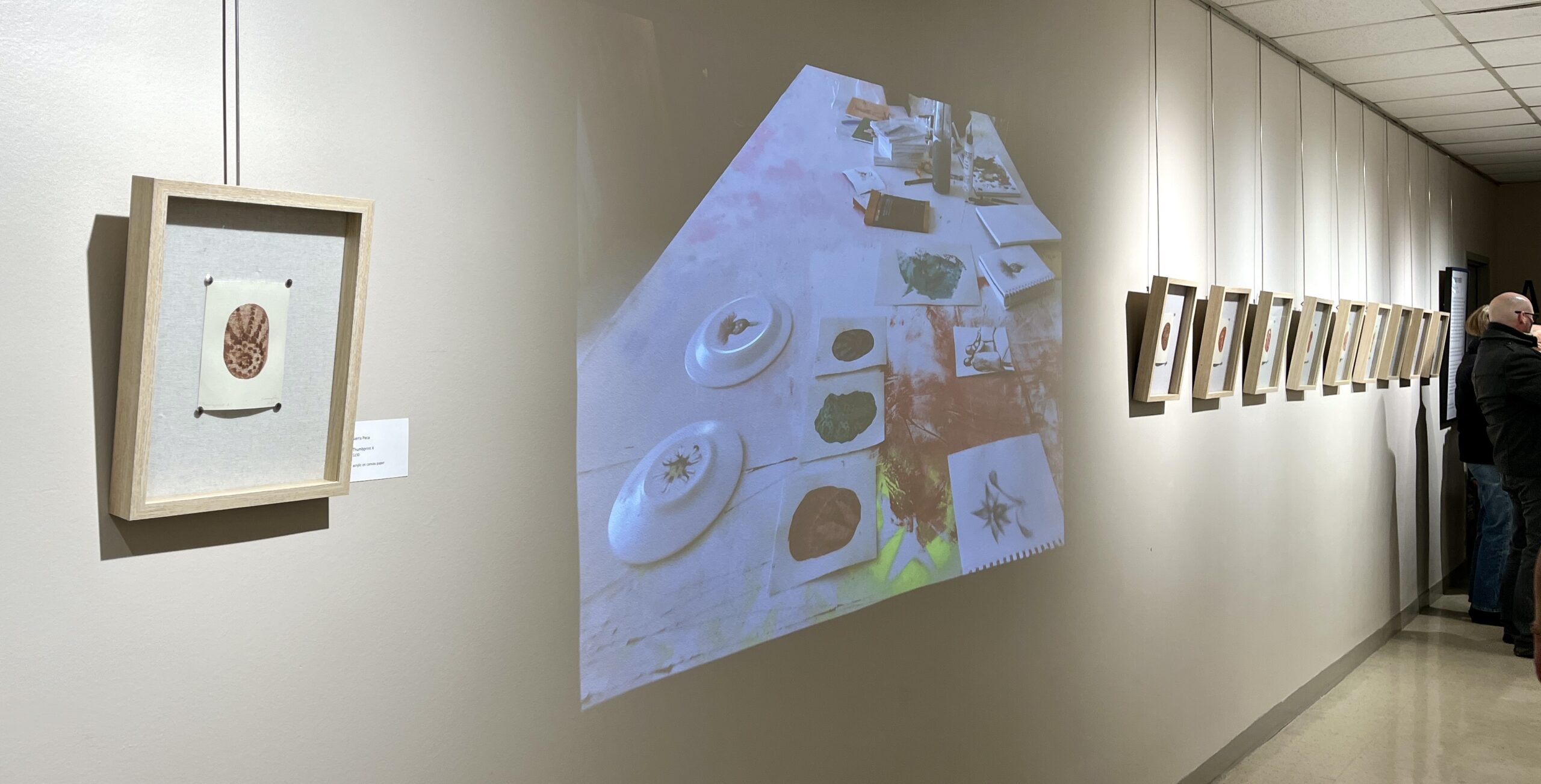Sierra Peca’s “The Fragility of Identity”
The UTM alum and artist’s new exhibit explores the impact of colonization in small island cultures, such as Malta.
“I wanted to be a vessel to teach people here about Malta,” said Sierra Peca, a third-generation Maltese-Italian Canadian artist and recent University of Toronto Mississauga (UTM) alum. She is currently pursuing her Masters in Art History at the St. George campus with a specialization in feminist and decolonial theory.
In her current exhibition, “The Fragility of Identity,” Peca explores the impact of colonialism on the ecosystems of Malta. It began with her residency at the Gozo Contemporary in 2024, which she discovered at the recommendation of one of her undergraduate professors. She was most inspired by the Valletta Gardens and the views from the ancient Ħaġar Qim temples.
“While at Ħaġar Qim I was told about this smaller island, Filfla. The British army used to use it as target practice and basically ruined all ecosystems on it,” Peca shared. Her trip to the temples and the Valletta Gardens occurred on the same day and sparked this idea for her to mix her art with ecosystems.
While visiting one of the Crafts Villages in Malta, she bought her first plate to be used in her Fragility series. Once back in Gozo, she began her process, considering breaking it first and painting on the shards. Fearing the plate would shatter, she decided to use it whole, making her first painting on it and soon asking her Nanna to bring her more.
“Almost all of them are marked with an engraving that says they were made in England, a few of them in France, which is ironic,” she said, a calculated choice to represent the years of colonization Malta has faced from various countries.
Each of the plants Peca featured is endemic or semi-endemic to Malta, and almost all of them are categorized as endangered or at risk of extinction—another reminder of the impact of colonization even after 60 years of independence.
During her residency, Peca could experiment more in her work rather than stick to the expectations she sometimes felt during her studies. She could also explore a new way of framing her art. Having previously worked on canvases that were much easier to hang, the plates proved to be the most surprising part of the experience.
“I figured ‘oh I’ll take a Sunday to frame them, whatever,’ but it took five days to frame them by myself,” she laughed. “Thankfully, I enjoy the labour of making art.”
The second part of her exhibit is her Thumbprint series, which uses and explores the traditional Maltese bizzilla (lace).
“While in Gozo, I was talking to a woman who was making the lace, and she told me that you can always tell the difference between traditional versus imported lace,” said Peca. “Even if it’s made with the same pattern, it will always have small differences.”
She tried various ways of using the lace, as a stamp and as a canvas, before landing on the final product of using the patterns to make these “thumbprints.” Similarly to real fingerprints, each one is unique. The art of bizzilla is a dying one, and Peca points to its historically gendered connotations.
“Historically, women’s art has instead been called a ‘craft’ or been diminished,” she said. “It’s not a new thing of women being in art, but it’s a new thing to actually recognize it as art and not as just a craft.”
Peca’s work explores and challenges the different colonial and gendered aspects of Maltese culture, looking at them through a different lens and shining a new, appreciative light on what are often overlooked and endangered cultural features.
“The Fragility of Identity” is on display at the Etobicoke Civic Centre in the Ascent Gallery from February 3 until April 24, 2025. You can connect with Sierra and explore more of her work on her website and her Instagram.

